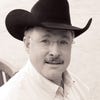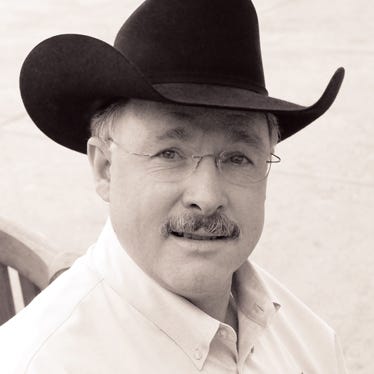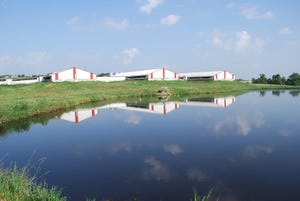Cost Will Drive Opportunity In The Cattle Business
Logic demands pondering on how the steep decline in cow numbers impacts the industry's infrastructure.
August 1, 2011

Take 40% of the factory away, and all you know for sure is that whoever’s left will be paying more to produce and buy the finished product. That’s why BEEF magazine began this exclusive nine-part series, wondering whether or not the current beef industry model was sustainable.
The working definition for industry sustainability has been one profitable enough to sustain current demand or growth; one with enough economic incentive and few enough hurdles to allow new participants.
From a cow-calf perspective, the model in question is simply to wean the highest percentage and the heaviest weaning weight per cow exposed for the least cost. There’s no reason to expect that to change in the future, though the focus will likely shine more brightly on costs.
This model was largely established by the Baby Boomers during an era when corn was basically cheap. Other than a blip here or there, folks could set their clocks by corn prices. Then came the commodity bubble a few years ago, followed by heavily subsidized corn for ethanol production. And, lastly, all those pesky folks from around the world with as much money as needed to compete for that corn.
Though it’s ultimately without a definitive answer, the central question about sustainability continues to merit thoughtful consideration.
USDA reports that there were 46.9 million beef cows in the U.S. in July 1975; the most beef cows in this nation since 1990 was 1995’s 37.2 million head. As of Jan. 1, 2011, there were 30.9 million head (Table 1).
Shrinking cowherd
Since 1975, the nation’s cowherd contracted by 16 million head – 40% fewer over a 36-year period. That reduction in cows is greater than the number that currently comprise the total beef cowherds in the seven largest beef cow states (Table 2).
As Barry Dunn put it at the outset of this series, “Despite worldwide population demand for beef, the U.S. beef industry is contracting. For the first time, we’re questioning the sustainability of the beef industry in the U.S.” Dunn is the dean of South Dakota State University’s College of Agricultural and Biological Sciences (see “Industry Next,” October BEEF, page 48).
This ongoing beef cowherd contraction may be old news, but when you look at it relative to other data, a stark reality emerges.
For instance, there were 215,973,199 folks living in the U.S. in July 1, 1975, according to the U.S. Census Bureau. In 2010, it was 309,050,816. So, domestic population has grown 43.1% during that same period of time.
Meanwhile, annual beef production in 1976 was 26.0 billion lbs. on a commercial slaughter of 42.7 million head. In 2010, it was 26.4 billion lbs. on a commercial slaughter of 34.2 million head.
Before you get overly excited about beef-production efficiency, consider some rough calculations by Steve Hammack, Texas A&M University Extension emeritus beef specialist, in his June Beef Cattle Browsing newsletter. In 1959, he says beef production per head slaughtered was 477 lbs; it was 757 lbs. in 2009, increasing 59%. In 1959, though, 26% of the cattle slaughter was calves; only 2% was in 2009.
Assuming that all calves both years were fed out as mature cattle, increased beef production per head was 28%. That mirrors the growth in slaughter weights from 1,008 lbs. in 1959 to 1,293 lbs. in 2009.
Total red-meat production in 1976 – beef, veal, pork, lamb and mutton – was 39.6 billion lbs. vs. 49.2 billion lbs. in 2010. The difference though is pork – 12.4 billion lbs. in 1976 and 22.5 billion lbs. last year.
Costs rise with contraction
Closer to home, logic demands pondering how the steep decline in cow numbers impacts the industry’s infrastructure. Pick a subject.
If you figure 16 million fewer cows, even at an average of 30 cows to a bull, it means 533,333 fewer bulls were needed at the beginning of the nation’s breeding season this year than in 1975.
Figure a common replacement rate and an 85% weaning rate per cow exposed, and the cattle missing this year compared to 1975 could have filled 107 feedyards, each with a one-time capacity of 50,000 head, turning inventory 2.5 times/year.
Shutter 40% of the factory and you don’t need as much of anything, but what you do need costs more than it would have if there were still as many head to share the cost.
Consequently, the cost-focus of any commodity business is inherently magnified. Then you start tacking on increased feed cost due to apparently permanently higher grain prices and competition for acres. Then you consider the increased equity requirements that go with record-high cattle prices, the extra cost of managing financial risk and so on.
“Even with all the efforts we continue to make in adding value, ours is largely a cost-driven industry. The most profitable operations are still largely defined by their ability to manage costs. The variation around cost is usually much larger than the variation around revenue,” says Ken Ode, head of Kansas State University’s Department of Animal Sciences and Industry (see “Cost is Today’s Key,” November BEEF, page 36).
Costs and economies of size are behind the concentration and consolidation permeating the cattle and beef business as the cowherd contracts.
Rational assumptions
Take it all together and anyone’s notion about the future is as likely as the next. Rational assumptions exist, though. What follow are among them.
• Perhaps more than in the past, the high capital requirement of cow-calf production favors those already established in the business to remain in the business rather than trading out and back in later on.
“No one can start a ranch business with ranch earnings and expect to earn $60,000 before self-employed and income taxes. With a 2% return on investment in ranching, it would require $3 million in equity. Assets earning 2% can service only limited debt,” says Jim McGrann, Texas A&M University (TAMU) livestock economist and professor emeritus. He owns Ranch Management Economist, a ranch business consulting firm (see “Show Me the Money,” December BEEF, page 40).
“In reality, less than 4% of the beef cow-calf operations make their sole living from the cow-calf enterprise,” McGrann says. “This means the industry can produce at least 50% of the feeder cattle and not be profitable to owners. These calves support the feedyard and packing industry and lower consumer cost of beef.”
• Ultimately, equilibrium must be achieved between the cowherd and capacity in the packing and feedlot sectors, meaning there will likely be less supply premium or cushion than has existed for at least the last decade. The commodity nature of each sector demands it.
“Nobody likes to think about downsizing, but we’re in a smaller industry” says Bill Mies, a TAMU professor emeritus. “When commercial cattle feeding began in the 1970s, we had 135 million head of cattle (total inventory) and were killing steers at 1,050 lbs. and heifers at 1,000 lbs. Today, we have 93 million head and we’re killing steers at 1,400 lbs.” (see “Balancing Act,” March BEEF, page 20).
• Beef exports are the fulcrum of future cattle business opportunity. Last year, U.S. beef export value equated to $153.09/head of slaughter, according to the U.S. Meat Export Federation. The domestic demand ceiling seems low and strong. Domestic business growth will come from international demand.
• Managed maternal heterosis must increase. It remains one of the most cost-effective ways to increase production with the same resources or to maintain production with fewer resources.
• Diversification to spread costs and risk. “I don’t know that we’ll have lots more cows or lots fewer over time,” says Nevil Speer, Western Kentucky University animal science professor. “I do see cowherds getting bigger on average and shifting to more diversified operations, leveraging capital and spreading risk across more enterprises where cattle become a by-product rather than the primary focus of an operation.”
• Finding a way through the muck will require new thinking. “A fatal mistake in the business today is marching under old prejudices, believing the market will always be what it always was,” Speer says.
“You have to question everything, every practice as to whether or not it’s still the best way,” Field says. “Take a hard look at the total enterprise – land, equipment, labor, cattle – and see if there are more ways to leverage to add value.”
About the Author(s)
You May Also Like





